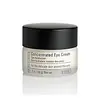What's inside
What's inside
 Key Ingredients
Key Ingredients

 Benefits
Benefits

 Concerns
Concerns

 Ingredients Side-by-side
Ingredients Side-by-side

Water
Skin ConditioningPropanediol
SolventGlycerin
HumectantNiacinamide
SmoothingCetearyl Alcohol
EmollientCetearyl Ethylhexanoate
EmollientCaprylic/Capric Triglyceride
MaskingDimethicone
EmollientPetrolatum
EmollientPolyacrylate Crosspolymer-6
Emulsion StabilisingHydrogenated Lecithin
EmulsifyingCeramide NP
Skin ConditioningCeramide AP
Skin ConditioningCeramide EOP
Skin ConditioningCarbomer
Emulsion StabilisingBehentrimonium Methosulfate
Triethyl Citrate
MaskingCaffeine
Skin ConditioningSodium Hyaluronate
HumectantSodium Lauroyl Lactylate
EmulsifyingSodium Lactate
BufferingCholesterol
EmollientPalmitoyl Tripeptide-1
Skin ConditioningPalmitoyl Tetrapeptide-7
Skin ConditioningPhenoxyethanol
PreservativeIsopropyl Myristate
EmollientCaprylyl Glycol
EmollientTrisodium Ethylenediamine Disuccinate
Phytosphingosine
Skin ConditioningXanthan Gum
EmulsifyingButylene Glycol
HumectantPolysorbate 20
EmulsifyingBenzoic Acid
MaskingWater, Propanediol, Glycerin, Niacinamide, Cetearyl Alcohol, Cetearyl Ethylhexanoate, Caprylic/Capric Triglyceride, Dimethicone, Petrolatum, Polyacrylate Crosspolymer-6, Hydrogenated Lecithin, Ceramide NP, Ceramide AP, Ceramide EOP, Carbomer, Behentrimonium Methosulfate, Triethyl Citrate, Caffeine, Sodium Hyaluronate, Sodium Lauroyl Lactylate, Sodium Lactate, Cholesterol, Palmitoyl Tripeptide-1, Palmitoyl Tetrapeptide-7, Phenoxyethanol, Isopropyl Myristate, Caprylyl Glycol, Trisodium Ethylenediamine Disuccinate, Phytosphingosine, Xanthan Gum, Butylene Glycol, Polysorbate 20, Benzoic Acid
Water
Skin ConditioningButylene Glycol
HumectantCaprylic/Capric Triglyceride
MaskingOlea Europaea Fruit Oil
MaskingStearic Acid
CleansingHydrogenated Palm Oil
EmollientSqualane
EmollientGlycerin
HumectantPentylene Glycol
Skin ConditioningPolysorbate 60
EmulsifyingLeuconostoc/Radish Root Ferment Filtrate
AntimicrobialCetyl Alcohol
EmollientSorbitan Stearate
EmulsifyingAlcohol
AntimicrobialPhenoxyethanol
PreservativePotassium Hydroxide
BufferingRosmarinus Officinalis Leaf Extract
AntimicrobialCarbomer
Emulsion StabilisingMagnesium Aluminum Silicate
AbsorbentDipotassium Glycyrrhizate
HumectantTocopherol
AntioxidantBiosaccharide Gum-1
HumectantAesculus Hippocastanum Seed Extract
Skin ConditioningSodium Hyaluronate
HumectantSasa Veitchii Leaf Extract
Skin ConditioningPanax Ginseng Root Extract
EmollientCucumis Sativus Fruit Extract
EmollientRoyal Jelly Extract
Skin ConditioningCitric Acid
BufferingWater, Butylene Glycol, Caprylic/Capric Triglyceride, Olea Europaea Fruit Oil, Stearic Acid, Hydrogenated Palm Oil, Squalane, Glycerin, Pentylene Glycol, Polysorbate 60, Leuconostoc/Radish Root Ferment Filtrate, Cetyl Alcohol, Sorbitan Stearate, Alcohol, Phenoxyethanol, Potassium Hydroxide, Rosmarinus Officinalis Leaf Extract, Carbomer, Magnesium Aluminum Silicate, Dipotassium Glycyrrhizate, Tocopherol, Biosaccharide Gum-1, Aesculus Hippocastanum Seed Extract, Sodium Hyaluronate, Sasa Veitchii Leaf Extract, Panax Ginseng Root Extract, Cucumis Sativus Fruit Extract, Royal Jelly Extract, Citric Acid
 Reviews
Reviews

Ingredients Explained
These ingredients are found in both products.
Ingredients higher up in an ingredient list are typically present in a larger amount.
Butylene Glycol (or BG) is used within cosmetic products for a few different reasons:
Overall, Butylene Glycol is a safe and well-rounded ingredient that works well with other ingredients.
Though this ingredient works well with most skin types, some people with sensitive skin may experience a reaction such as allergic rashes, closed comedones, or itchiness.
Learn more about Butylene GlycolThis ingredient is an emollient, solvent, and texture enhancer. It is considered a skin-softener by helping the skin prevent moisture loss.
It helps thicken a product's formula and makes it easier to spread by dissolving clumping compounds.
Caprylic Triglyceride is made by combining glycerin with coconut oil, forming a clear liquid.
While there is an assumption Caprylic Triglyceride can clog pores due to it being derived from coconut oil, there is no research supporting this.
Learn more about Caprylic/Capric TriglycerideCarbomer is a polymer of acrylic acid. Its main role is to create a gel consistency.
A high amount of carbomer can cause pilling or balling up of products. Don't worry, most products contain 1% or less of carbomer.
Glycerin is already naturally found in your skin. It helps moisturize and protect your skin.
A study from 2016 found glycerin to be more effective as a humectant than AHAs and hyaluronic acid.
As a humectant, it helps the skin stay hydrated by pulling moisture to your skin. The low molecular weight of glycerin allows it to pull moisture into the deeper layers of your skin.
Hydrated skin improves your skin barrier; Your skin barrier helps protect against irritants and bacteria.
Glycerin has also been found to have antimicrobial and antiviral properties. Due to these properties, glycerin is often used in wound and burn treatments.
In cosmetics, glycerin is usually derived from plants such as soybean or palm. However, it can also be sourced from animals, such as tallow or animal fat.
This ingredient is organic, colorless, odorless, and non-toxic.
Glycerin is the name for this ingredient in American English. British English uses Glycerol/Glycerine.
Learn more about GlycerinPhenoxyethanol is a preservative that has germicide, antimicrobial, and aromatic properties. Studies show that phenoxyethanol can prevent microbial growth. By itself, it has a scent that is similar to that of a rose.
It's often used in formulations along with Caprylyl Glycol to preserve the shelf life of products.
Sodium Hyaluronate is hyaluronic acid's salt form. It is commonly derived from the sodium salt of hyaluronic acid.
Like hyaluronic acid, it is great at holding water and acts as a humectant. This makes it a great skin hydrating ingredient.
Sodium Hyaluronate is naturally occurring in our bodies and is mostly found in eye fluid and joints.
These are some other common types of Hyaluronic Acid:
Learn more about Sodium HyaluronateWater. It's the most common cosmetic ingredient of all. You'll usually see it at the top of ingredient lists, meaning that it makes up the largest part of the product.
So why is it so popular? Water most often acts as a solvent - this means that it helps dissolve other ingredients into the formulation.
You'll also recognize water as that liquid we all need to stay alive. If you see this, drink a glass of water. Stay hydrated!
Learn more about Water